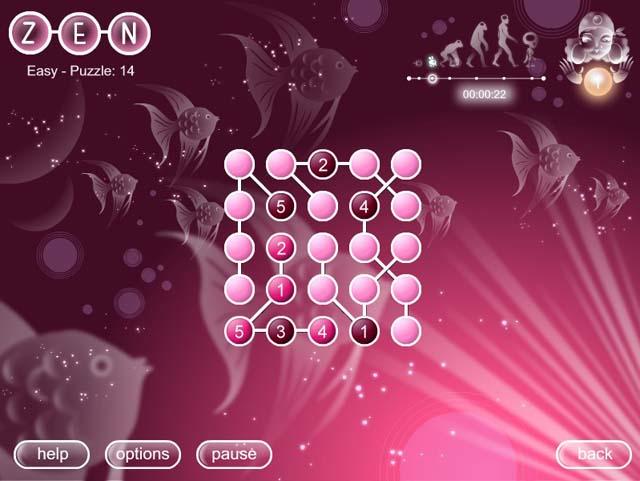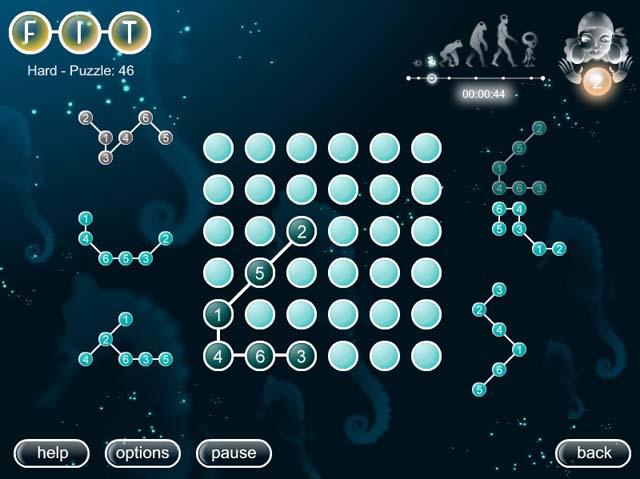- Wondering how to get Monopoly GO! free rolls? Well, you’ve come to the right place. In this guide, we provide you with a bunch of tips and tricks to get some free rolls for the hit new mobile game. We’ll …
Best Roblox Horror Games to Play Right Now – Updated Weekly
By Adele Wilson
Our Best Roblox Horror Games guide features the scariest and most creative experiences to play right now on the platform!The BEST Roblox Games of The Week – Games You Need To Play!
By Sho Roberts
Our feature shares our pick for the Best Roblox Games of the week! With our feature, we guarantee you'll find something new to play!Type Soul Clan Rarity Guide – All Legendary And Common Clans Listed!
By Nathan Ball
Wondering what your odds of rolling a particular Clan are? Wonder no more, with my handy Type Soul Clan Rarity guide.
Strimko Review
There have been a rash of great logic/puzzle games in the last few months, and Strimko, from newcomer Braintonik, is a worthy addition to that roster. Taking Sudoku in new directions makes for a fun – if uneven – experience.

There have been a rash of great logic/puzzle games in the last few months, and Strimko, from newcomer Braintonik, is a worthy addition to that roster. Taking Sudoku in new directions makes for a fun – if uneven – experience.
So what makes Strinko different from Sudoku? Directions. Just like Sudoku, you have to enter numbers into a grid, ensuring that no number appears twice in any row or column. However, Strimko adds the unique idea of have lines that zig-zag through the various grids. The numbers along this line function like a row or column, requiring you to avoid repeating numbers along it. It’s a great idea that adds dimensions to the gameplay, especially as the grids increase in size from 4×4 to 7×7.

There are two main modes (story, and classic – which is just the levels) with 220 levels to play. The story tasks you with helping someone named Luana rebuild an astrolabe and heal her home planet. Gameplay is identical in both modes save for mini-games in the story mode (which are entirely skippable). Mini-games range from finding an identical pair to a small hidden object game. All of these mini-games are skippable, and don’t add a great deal to the experience.
In fact, that idea seems to be pervasive in Strimko. Adding extras to the great idea dilutes the experience. There are four gameplay types. “Zen” is the main Sudoku-like mode already described; the other three modes aren’t nearly as fun. “Pave” mode has all the same mechanics of Zen, but the numbers are entered by clicking and dragging them from a list on the right side of the screen. Attached to each number is some sort of line, indicating the extra connection pathway, and they must fit in a certain way. “Fit” takes this idea even further by requiring you to rotate and drag clusters of numbers onto the grid. It all ends up feeling like a glorified jigsaw puzzle.
Only the fourth mode – “Tri” – feels like an extra breath of fresh air. Rather than a square-shaped grid, the playfield is shaped like a triangle. This really changes your strategy, as traditional straight lines go by the wayside, and columns can do on a diagonal.
To help you solve the new types of puzzles, Strimko employs a great hint system. After a time, either the game shows you the answer to one square, or will darken all your correct answers, helping you to focus on fixing any mistakes. During Zen and Tri modes, these hints are invaluable, yet can be ignored if you wish. However, in Fit and Pave, the hints are more like free giveaways, often diluting the challenge tremendously.

From a production standpoint, Strimko is excellent. The graphics and nice and detailed, and usually bright and colorful. The soundtrack deserves special mention, as the designers created a single 60-minute piece of music, banishing the dreaded annoying loop. This alone should be celebrated, and other game makers should take note. Only some occasional poor color choices – most notably, putting white graphics and text over white backgrounds – and the odd grammatical error mar an excellently-produced game.
So what prevents Strimko from becoming a classic? Mostly the other modes of play that deviate from the traditional number entry of Sudoku make the game feel padded. When compared to something like Everyday Genius: Square Logic – which kept the same gameplay concept constant but changed the execution and complexity – one cannot help feeling like Pave and Fit were experiments that didn’t work quite as well as Zen and Tri in that they lacked the logic-puzzle feel of Sudoku.
If only counting Zen and Tri, Strimko is an excellent puzzle game with an original wrinkle to the traditional Sudoku formula. However, having to play jigsaw puzzles may not be your cup of tea. Do give Strimko a chance for the great ideas it does bring to the table. If there’s a follow-up, let’s hope Braintonik puts enough faith in their main gameplay concept to craft an entire game around it, rather than most of one.

The good

The bad
More articles...
Monopoly GO! Free Rolls – Links For Free Dice
By Glen Fox
Wondering how to get Monopoly GO! free rolls? Well, you’ve come to the right place. In this guide, we provide you with a bunch of tips and tricks to get some free rolls for the hit new mobile game. We’ll …Best Roblox Horror Games to Play Right Now – Updated Weekly
By Adele Wilson
Our Best Roblox Horror Games guide features the scariest and most creative experiences to play right now on the platform!The BEST Roblox Games of The Week – Games You Need To Play!
By Sho Roberts
Our feature shares our pick for the Best Roblox Games of the week! With our feature, we guarantee you'll find something new to play!Type Soul Clan Rarity Guide – All Legendary And Common Clans Listed!
By Nathan Ball
Wondering what your odds of rolling a particular Clan are? Wonder no more, with my handy Type Soul Clan Rarity guide.







